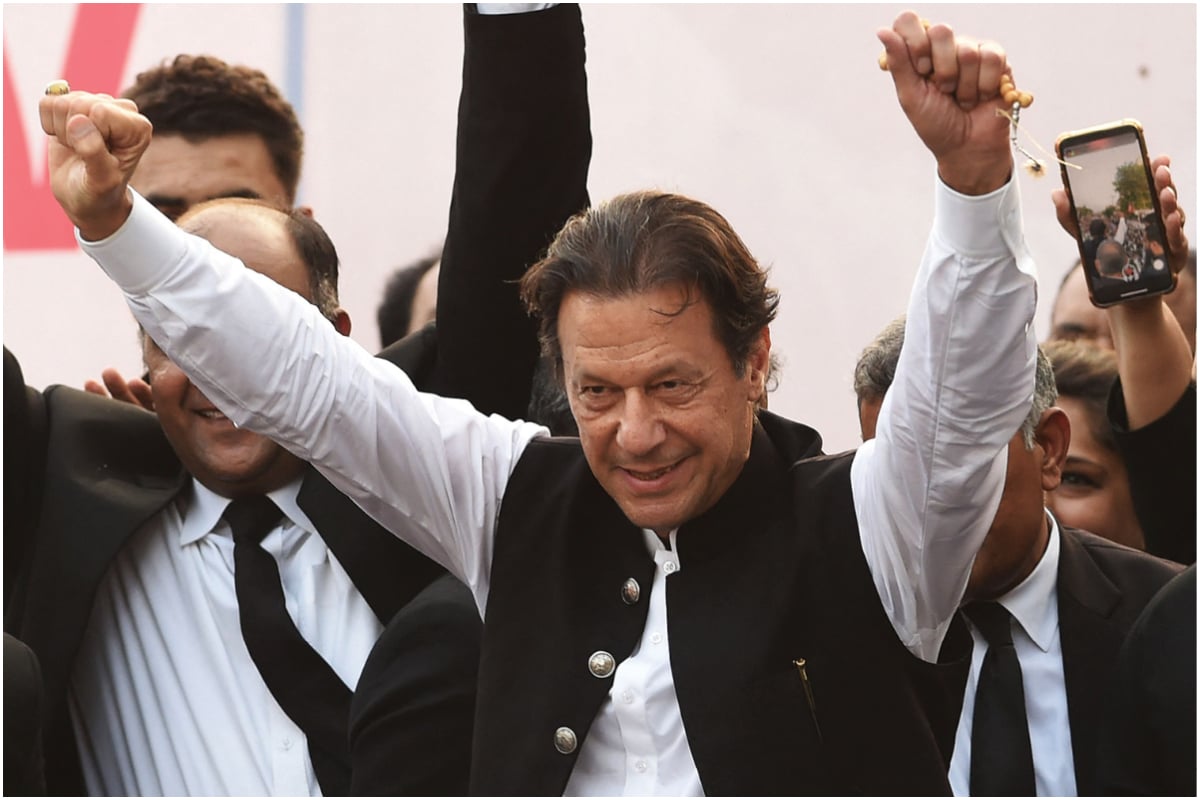
The Last Resort
If the current status quo persists, Pakistan stares an economic and political breakdown in the face
It seems PTI Chairman Imran Khan has succeeded in his plan of cutting short the tenure of his opponents’ coalition government and paving the way for an early general election. Punjab Chief Minister Pervez Elahi’s decision on January 12 to dissolve the Punjab Assembly, soon after securing a vote of confidence from the house, is likely to set off a roller coaster of political activity. Now the PTI is all set to also dissolve the Khyber-Pakhtunkhwa provincial assembly in the coming days.
The dissolution of two provincial assemblies coupled with the pending resignation of PTI members of the National Assembly create a situation that could lead to an interim set-up under whose watch fresh general elections will be held not only in the two provinces, but in all the four provinces and in the Centre. The elections in Punjab and KP will have to be held within 90 days of the assemblies’ dissolution. If the National Assembly is not prematurely dissolved, it could lead to a situation in which the provincial elections would be completely out of sync with those for the National Assembly. The 13-party coalition, mainly comprising the PML-N and the PPP, may resist premature dissolution of the National Assembly on technical grounds and can use some delaying tactics, but the chances of survival of the coalition government are slim, given the overall political instability and murky economic situation in the country. Meanwhile, President Arif Alvi is making efforts to get the main political parties to sort out their differences through dialogue and debate and reach some sort of understanding ahead of future general elections.
In the last nine months, since the ouster of Imran Khan as Prime Minister, PPP supremo Asif Zardari has employed numerous tactics to topple the PTI-PMLQ coalition government in the Punjab, but he has failed. At one stage, with the help of his ally, the PML-N, Zardari caused defections within the PTI and overthrew the PTI Chief Minister Usman Buzdar, but he could not win the crucial support of Chaudhry Pervez Elahi — and that of his 10 members in the provincial assembly — which were necessary for a decisive majority in a split house. Imran Khan’s popularity wave has been so intense that even a veteran politico like Chaudhry Pervez Elahi, and more so his son Moonis Elahi, saw their political survival in sticking to Khan. The members of the Punjab Assembly who had defected from the PTI lost their membership under the defection law and later contested as PML-N candidates in the by-elections, only to face humiliating defeat. This is despite the fact that at that time the PML-N’s Hamza Shehbaz was holding the office of Punjab Chief Minister and the state institutions were visibly leaning against the PTI. This time around, PPP’s minister in Sindh, Sharjeel Memon, camped in Lahore for nearly one- and-a-half-months to lure some PTI members away from the party. He succeeded in winning over a few members, but could not rope in enough people to depose Pervez Elahi. Asif Zardari’s machinations did not work in the Punjab where the middle class is robust and individuals matter less than party votes. PTI central leader Chaudhry Fawad alleged that a woman PTI member switched her loyalty after receiving a huge amount of money. Still, Elahi won a vote of confidence from 186 members of the Punjab Assembly when most observers had doubts about his strength in the house. Immediately afterwards, he dissolved the Punjab Assembly, burying the rumours that he had differences with Khan over this issue.
Imran Khan has wisely developed a good understanding with the Chaudhry of Gujrat, Pervez Elahi, realising his utility in the game of thrones in the Punjab. Khan knows he is pitted against a formidable enemy in the form of the Sharif family and needs allies. Following an attack on his life last November, and the information that more such plots exist, he decided not to lose a valuable ally in Chaudhry Pervez Elahi, whatever the price in terms of conceding political space to him for the time being. However, PTI cadres generally dislike Elahi and the authority he enjoys, despite being a leader of a much smaller party. Khan apparently realises that Elahi can also be a good go-between him and the Establishment as he has good relations with the two.
As matters progressed, the Establishment drew flak from Imran Khan who alleged that his party members had received phone calls from certain elements who tried to persuade them to defect to the PML-N. They were told Imran Khan stood no chance of coming to power. “They have not learnt any lessons from the past and are busy in political engineering,” Khan said, alluding to the Establishment. However, this seemed to be a half-hearted attempt on the part of the deep state, and it did not yield the desired results. The public pressure on the Establishment is so intense that it would be hard for it to cross that line in the sand.
A recent public opinion survey conducted early this month by IRIS, a research company, shows 56 per cent approval for Khan as against 19 per cent for his main rival, Nawaz Sharif, and zero rating for Prime Minister Shehbaz Sharif. According to the survey, Bilawal has an approval rating of only one per cent. The media campaigns aimed at character assassination of Imran Khan by releasing audio and video clips revealing his playboy lifestyle failed to dent his support base. Most people are already aware of Khan’s past and attach little importance to it. His supporters view him in contrast to his main opponents, Asif Zardari and Nawaz Sharif, both of whom amassed fabulous wealth at home and abroad while they were in power. His opponents tried to malign him by propagating that he had sold off an expensive watch bought from the state repository at a concessional rate, but this too did not hurt his reputation in a significant manner since almost all the rulers have benefited from the repository.
The PPP is trying to prop up its position in the southern districts of Punjab by wooing political notables. Bilawal Bhutto Zardari is being touted as the next Prime Minister with projections that his party will bag a large number of seats in Sindh, Balochistan and South Punjab. The dream may come true through some sort of political engineering, but as far as public opinion in the Punjab and KP is concerned, this seems a pipedream. Given the strength of the social media, it seems implausible that the state entities will be able to manipulate electoral politics to the extent of securing Bilawal Bhutto Zardari’s victory in the next general elections.
Before the 2018 general elections, the Punjab had remained a fortress of the PML-N for three decades. Even in 2018, the party lost South Punjab but won most of the seats in the central districts of the Punjab. Here too now the tide has turned against it. Nawaz Sharif is living abroad alienating his supporters. The last nine months of Prime Minister Shehbaz Sharif’s rule have been disastrous for the party. To begin with there is the unprecedented inflation rate at 25 per cent, the highest since 1971. The price of natural gas, widely used domestic fuel, is up by 74 per cent. Massive unemployment prevails in the industrial towns of central Punjab with almost half of the industrial units being closed due to an acute shortage of imported raw materials. The government has not been issuing foreign exchange for the opening of Letters of Credit. And food prices in the last nine months have almost doubled.
Pakistan has partially defaulted on its external payments. Parents are not able to send fees in foreign exchange for their children studying abroad. Thousands of shipments are stranded at the ports for non-payment. Last week, for the first time in the recent history of Pakistan, rich traders staged a protest demonstration on the streets of Karachi for want of foreign exchange. On January 12, the country’s forex reserves plummeted to a little above four billion dollars covering just three weeks of imports. Saudi Arabia and the UAE have promised some financing to Pakistan, but not sufficient enough to fully overcome the crisis. The remedy lies in reviving the IMF programme, but the government, for political reasons, is not taking the crucial decisions needed to fulfill the Fund’s conditionalities. The government can revive the IMF programme only by devaluing Pakistani currency further, and by imposing more taxes, especially on petrol — a sure recipe for opening the floodgates of another price-hike. In these circumstances, with each passing day, the government is becoming more and more unpopular.
For the sake of economic survival it is imperative for the state to take some hard economic decisions. The Sharif government cannot drag its feet for long. The financing pledged by the two Arab countries cannot not work for more than a few weeks. In such a scenario, it defies common sense that the state institutions will help prolong the present coalition government. The way out lies in forming an interim set-up that can take tough economic decisions and strike a bailout agreement with the IMF not only for the current year, but also for the next few years as Pakistan needs annual foreign financing (read loans) of more than 32 billion dollars to stay economically afloat. International lending institutions will prefer dealing with a politically stable government, not a shaky coalition one. We may see one or more smaller parties parting ways from the coalition sooner than later, bringing down the government and a caretaker government taking its place.
The PML-N and the PPP hope that Imran Khan is disqualified from holding public office courtesy one or the other of several cases instituted against him. According to his lawyer Ali Zafar, there are more than 50 cases pending against Khan. It is hoped that once Khan is declared ineligible, his supporters will get depressed and demoralised; his party will fall apart and serious rifts will appear among second-rank leaders in the fight for succession. So the game is to prolong the current status quo till such a verdict is out. The anti-Imran Khan lobby in the media has started projecting a new theory: Imran Khan is unarguably popular among the public, but he is not acceptable to the Establishment so he cannot come to power. The purpose is to keep local influential people away from Khan. The future of the PML-N and the PPP rests not on their political support among the public (which is quite thin at the moment), but on backdoor wheeling and dealing.
Catch all the National Nerve News, Breaking News Event and Latest News Updates on The BOL News
Download The BOL News App to get the Daily News Update & Live News.





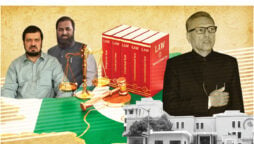
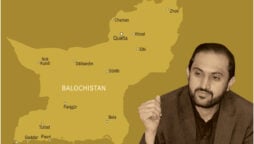
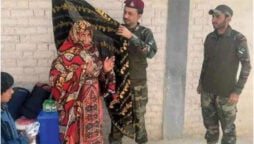
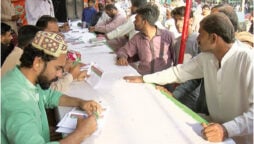
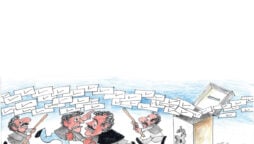
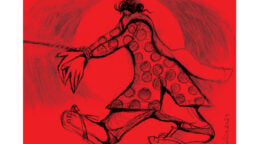

 Read the complete story text.
Read the complete story text. Listen to audio of the story.
Listen to audio of the story.